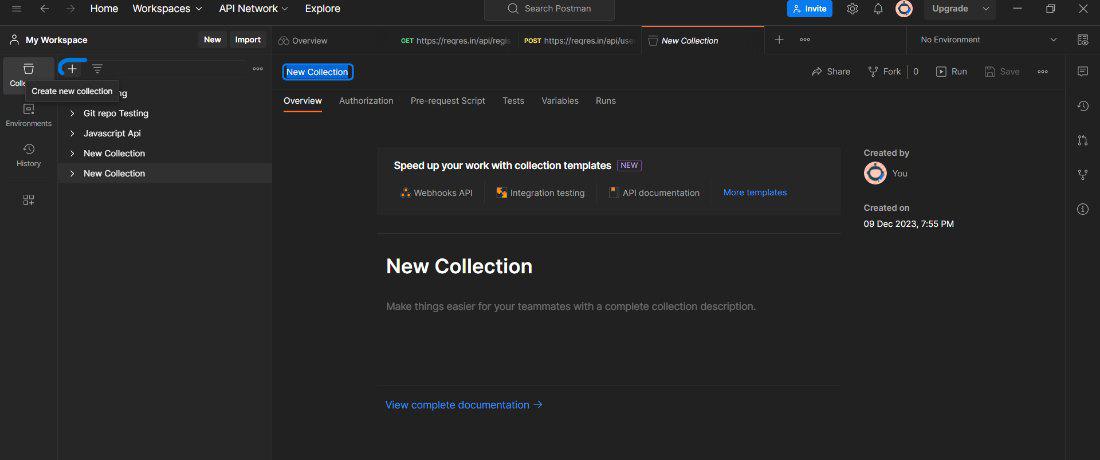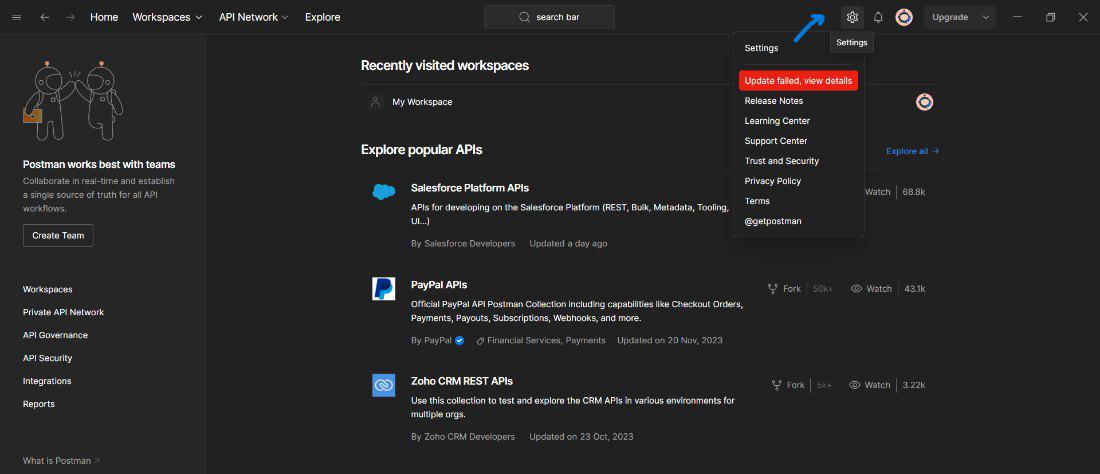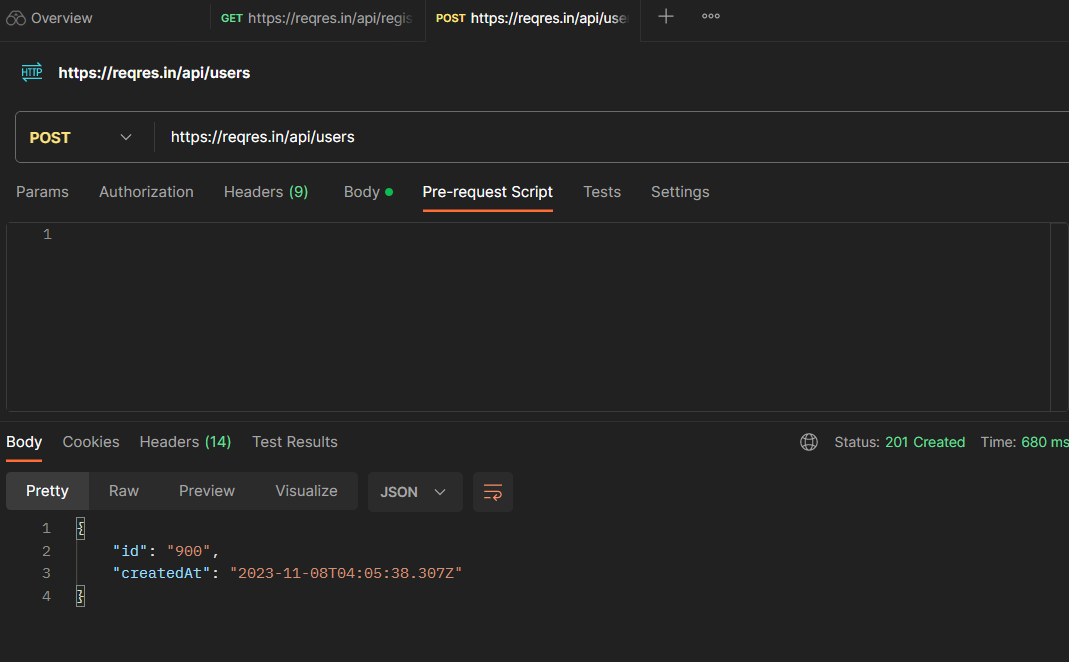How to Use Postman Online for API Testing
Last Updated :
27 Dec, 2023
Postman is a popular form for testing and is active among APIs, whether you’re a planner or an exploratory. Postman Online, as known or named at another time or place, is a variant of Postman that runs in your network internet or web viewing software, assigning you API testing and cooperation tasks outside the need to establish some operating system on your computer.
What is an application programming interface (API)?
- API stands for Application Programming Interface, which consists of a set of routines, procedures, and tools for software development.
- An API defines how one piece of software should interact with another. The API acts as a connection between two software applications, allowing them to communicate with each other. A programming interface (API) is a layer of software functions that can be used by other applications.
- A waiter can be considered an intermediary between your requests and the chef. Similarly, API refers to the intermediary between the client and the server.
What is a postman?
- Postman is an API platform for developers to design, build, test, and iterate their APIs.
- We can say that Postman is an API platform for creating and using APIs.
- Postman is an API (Application Programming Interface) development tool that helps create, test, and modify APIs. Almost every function a developer might need is packed into this tool.
- More than 6 million developers use it every month, making API development easy and simple.
Advantages of the Postman:
- Streamlined API Testing: Postman specifies an easy-to-use interface for producing and posting API requests, making it steady to check API endpoints and obey answers. It presents you with the capacity to ship miscellaneous styles of requests (GET, POST, PUT, DELETE, etc.) and personalize headers, limits, and request carcasses.
- Automated Testing: Postman offers an automated check for any form of API. Automation reduces the guide paintings essential for reversion experiments and guarantees consistency on your API tests.
- API Documentation: Documentation includes analyses of approximately request endpoints, headers, limits, and pattern answers.
- Collaboration, consistency, consistency, and teamwork: Postman gives workspaces wherein corporations of elements can collaborate on API check projects.
Why use Postman?
- Free: Postman is an unfastened software program that we will use for API testing. It is unfastened to download and use for groups of any size.
- Easy to use: Postman is an easy-to-use software program tool. We can ship HTTP requests of numerous types (together with GET, POST, PUT, PATCH, etc.).
- Community and Support: It has a large network discussion board for customer service and huge documentation.
- Extensible: Postman enables us to customize it in keeping with our desires with the Postman API.
- API Support: It enables us to make any API call (REST, SOAP, or undeniable HTTP) and effortlessly look into even the biggest responses.
- Runtime Services: Postman affords Runtime Services that assist us in manipulating API collections, environments, workspaces, and exclusive examples.
- Integration: Postman enables our capacity to effortlessly combine check suites into our favoured CI/CD equipment and services, together with Jenkins with Newman (a command-line series runner).
Key Terminologies:
- Workspace: The Workspace API allows you to create, view, import, and delete notebooks and folders. A book is a web link to a document containing legal documents, images, and explanations.
.jpg)
- Create New: This option creates new API requests, collections, environments, and other Postman assets.

- Browse Templates: You can approach a study of pre-created API templates and groups formed for one Postman community or by Postman itself.

- Recent: This division displays currently achieved workspaces, collections, and requests to help you quickly proceed with your work.
- Search: The search bar lets you follow particular API requests, collections, and different properties inside your workspaces.

- Settings: The background cuisine allows you to configure Postman choices, containing ideas, announcements, and other embracement alternatives. Postman is free software that we can use for API testing. It is free to download and use for teams of any size.

- Activity properties feed Activity (if handy): Some versions of Postman can involve a project feed that shows current changes, comments, and updates fashioned by you and your associates inside your workspaces.
- Learn Postman: This division often contains links to instructional possessions, instructions, and documentation to help you determine how to use Postman efficiently.
- Notifications (if handy): Some versions of Postman can display announcements within your workspaces or revise Postman.
- Your Workspaces: Here, you can visualize the upper class of your workspaces, which may be private or joint team parts. You can switch between middle and two-point workspaces to arrange your projects.
How to Create and Test APIs using Postman Online:
Step 1. Sign up Postmanyour Account in Postman Online or Create an account:
Go to Postman right side corner create an account, sign in or create a register button.
.jpg)
Step 2. Create a New API:
Go to the postman’s left corner and click the “New” tab.
(3).jpg)
Working With GET Requests
A GET request is a means passed down in HTTP (Hypertext Transfer Protocol) to fetch information from a server. When a GET request is sent, it appends information to the URL as a query framework. This information is apparent in the URL, making it correct for requesting information. GET requests are idempotent.
Step 1: Take a dummy API and Go to reqres.in URL.
Pick any URL, paste it into the Postman bar, and use the HTTP method.

Step 2: Send the Request for Testing
Fill out the requirements of the Postman bar and click on the “Send” button in the right corner to send the request for API testing.

Step 3: View the Request-Response:
Postman will send the request to the specified URL, and you will be able to view the response in the Postman API. The response will include the status code, headers, and body of the API response and output

Working With POST Requests
A POST request is used to transmit information to the server that is expected to be processed or stored. Unlike GET requests, POST requests do not display information in the URL. Instead, they contain the information in the request body, making them correct for sending impressionable or large amounts of information. They can have different belongings each time they are performed.
Step 1: bar, go to the browser, copy the API URL and paste it into the Postman Bar

post
Step 2. Apply the Request Body:
In the “Body” tab, you can outline the payload or facts you want to send with the POST request. This may be with miscellaneous plans like JSON, form-dossier, or raw paragraph, determined by the API’s necessities. Select the appropriate layout and specify the information formats accordingly.

Basic Part:
- Parameters: Add any URL parameters if required.
- Authentication: Configure authentication if the API requires it (e.g., Basic Auth, API key, OAuth).
Step 3. Pre-Information formats (request scripts) (optional):
If you need to run scripts before shipping the request, you can use the “Pre-request Script” label to adhere to JavaScript law. This may be valuable for creating active ethics or operating arrangements.

Step 5. View the Response:
Save the request and click the send button to execute the POST request. and Postman will display the response from the API, containing the rank rule, headers, and response body. You can examine the answer to validate that the API behaves as anticipated.

response
Create a Collection in Postman:
Creating a group in Postman is an easy process. Postman is a common API experiment, and accumulations are used to group and systematize API requests. Here are the steps to construct a group in Postman.
- Click on the “Collections” tab in the left sidebar.
- Click the “New Collection” button or the “Create a Collection” option.
- Give your collection a name.
For more details about the collection, check out Read this
Conclusion:
Postman is a very powerful tool for developers and hackers. Many types of requests can be sent, and very important information can be obtained. A free and paid version are also available on the market.
Share your thoughts in the comments
Please Login to comment...